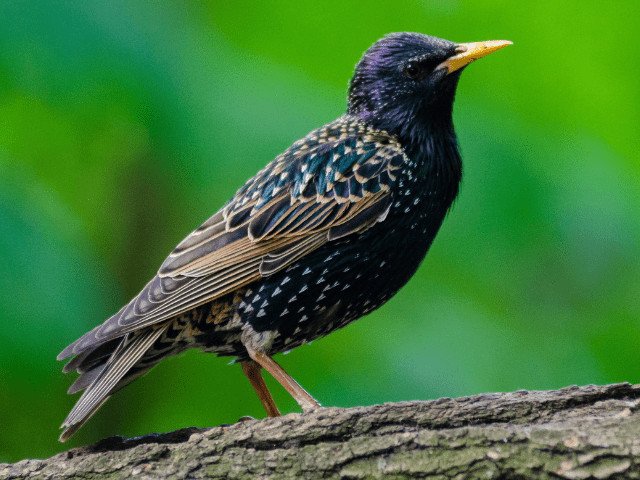Indiana, the home of the ever-beautiful Northern Cardinal.
But that's not all they can offer!
Indiana is a well-known place for its birdwatching opportunities.
With 418 species to choose from, we're confident you'll be able to cross a lot off of your list.
This article will review and discuss local birds from their frequency up to the seasons they're around. So for birdwatchers out there, don’t worry because we won’t keep you waiting.
Keep scrolling to learn all about them.
Most Common And Interesting Indiana Birds – Grouped Up
With the vast number of species in this state, we have gathered the most common and interesting ones just for you. We have grouped the species in seasonal clusters, so you'll know what to expect when you take a visit!
- Year-round Resident Birds
- Birds of Spring, Summer, and Early Fall
- Fall and Winter Birds
Year-Round Resident Birds
These types of birds are here to stay!
So no matter when you visit the state of Indiana, they'll be right there waiting for you.
1. American Robin
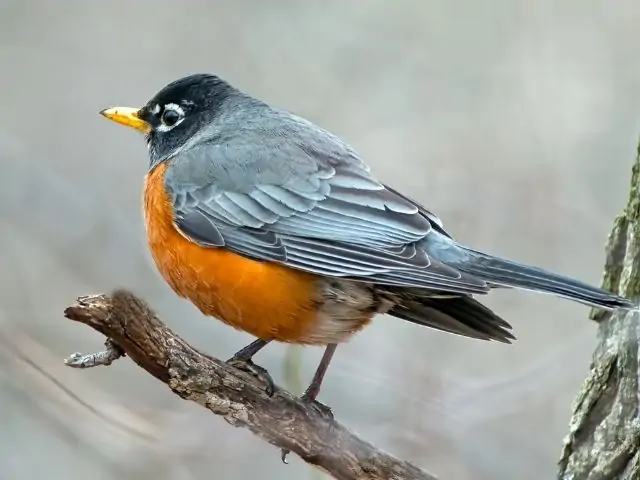
The American Robin or Turdus Migratorius is a resident full of colors that you can find in Indiana, one of Indiana's most colorful residents.
This bird has gray and brown wings, an eye-catching orange belly, and a white patch under its tail. They have a gray-black head and females with a slightly lighter color and a small, white ring around their eyes. They also have short, curved yellow bills.
The size of these songbirds measures from 7.9 in. to 11 in, and a wingspan of approximately 12.2 in. to 15.8 in.
They mostly live in deciduous trees, parks, fields or can even be found jumping on the snow in your backyard and feeder.
If you're planning on feeding them, you should know that they love peanuts, raisins, chopped apples, suet, and sunflower seeds. Although you may already know that their favorite meal is mealworms, they are joyful, playful, and not picky eaters.
Fun Fact: Holy birdwings! The American Robin truly lives up to its name. This avian species is one of the top 12 birds of California and in other US states, as well.
2. Red-Bellied Woodpecker
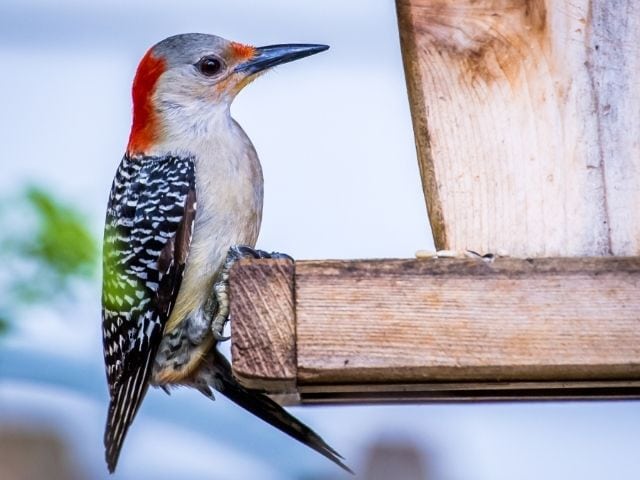
The Red-Bellied Woodpecker or Melanerpes Carolinus attracts attention with its uniquely patterned black and white striped wings. Its small and stout tail has the same plumage as its wings which provides great help in their posture when doing their pecking business.
The color of their underbelly is white with a soft combination of red. They have white faces and a stand-out red cap extending until its nape. This bird has a long, straight black bill.
Their size is approximately 9.4 in., with a wingspan measuring up to 13 in. to 16.5 in.
The birds’ favorites are Oak and Hickory trees; however, you may commonly find them in almost all the forest. They also love backyards, so you better prepare a cozy place for them when they visit you!
They will be in for the treat you have for them in a feeder as they cannot quite control their sweet tooth.
See all of the woodpeckers in Indiana here.
3. White-Breasted Nuthatch
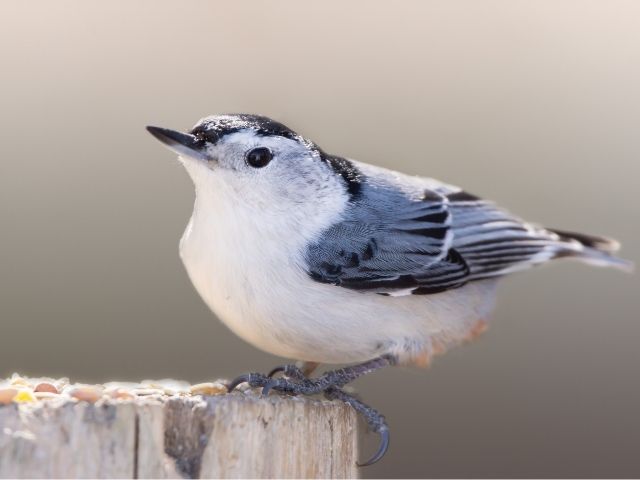
The White-Breasted Nuthatch or Sitta Carolinensis has blue and gray wings and a tail with an accent of black and a white breast and underbelly. Sometimes, their underbelly will show a brown marking with a white underside of the tail.
These birds have white faces and necks, with some white over the underside of the bill that is black at the top that leads to gray or a black cap that extends back to the wings.
They have straight, long, black bills which have a line that extends from the back of the eye and lightens the color as it approaches the cap.
They measure about 5.1 to 5.5 in length, with wingspans of approximately 7.9 in. to 10.6 in.
They mainly eat suet, sunflower seeds, and peanuts. These foods can be placed on a feeder to help you attract them to your home.
4. European Starling
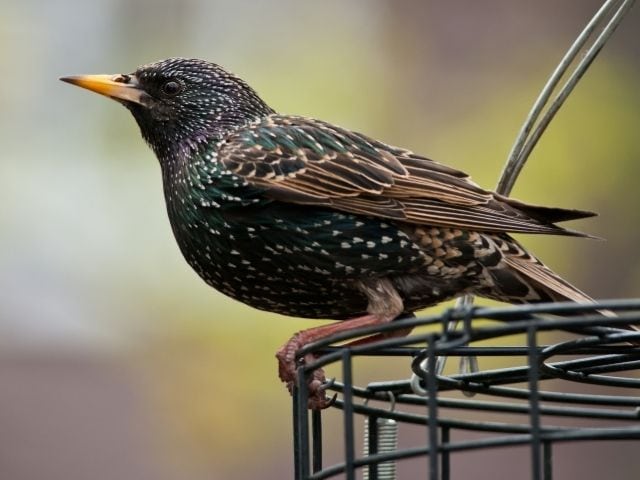
This bird only measures 8 inches long, so if you happen to spot it in the middle of the woods, your eyes are sharp as ever!
Their body is covered with a pretty and shining plumage color of black and blueish and black feathers, which complement their overall look.
They are fond of backyard feeders across various areas to gather their food when not on the ground. A European Starling would love to feed on tiny insects, worms, small seeds, and berries.
5. Mourning Dove
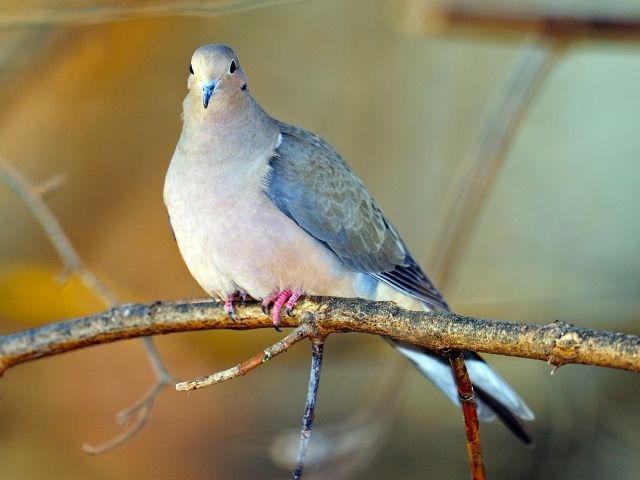
Mourning Doves or Zenaida Macroura have a tan to very light brown coloration all over their bodies (occasionally with a mix of gray).
As you may notice, it's a delicate blend, with the wings being darker than the breast, underside, and head, and particular dove additionally having spots on its wings and white tips on its slender tail. Their bills are tiny and delicate black.
Their length is approximately 9.1 to 13.4 inches from head to tail, with wingspans of about 17.7 inches.
They love to feed on sunflower seeds and millets. You may scatter these in the ground around the feeder, but you can also put their meal on the feeder for less hassle of cleaning your place.
Birds Of Spring, Summer, And Early Fall
Thankfully, while winters in Indiana are cold, they are short, so here are some birds you may see whenever it is not bitterly cold and windy. The following are the spring, summer, and early fall birds in Indiana:
1. American Tree Sparrow
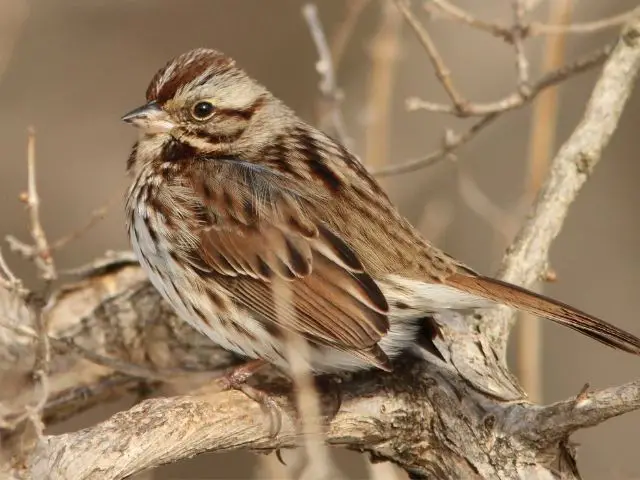
Their breasts are commonly light gray or brown with a dark splotch and underbellies lighter in color.
They have long tails and quite attractive faces, with gray heads, rust-colored caps, and rust outlines around their eyes that extend until their napes. Their beaks are small and stout, which are usually half-yellow and half gray or black.
The length of these backyard birds is measured up to 5.5 in. with a wingspan of approximately 9.4 in.
These sparrows are pretty attracted to shrubs, fields, forest edges, and sometimes water. A feeder is also on the list of their interests, but they like to keep their numbers minimum.
Usually, they eat mealworms, millet seeds, and dried berries. It’s their favorite, so I recommend bird feeding them with those.
2. Dark-Eyed Junco
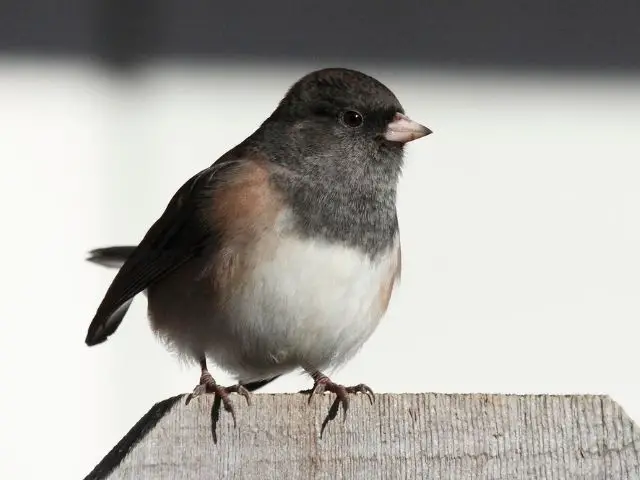
Its scientific name is Junco Hyemalis. They are regular visitors to a feeder across the United States, but they are most visible during the winter months.
They are local to the north; however, due to the coldness that arrives along with the winter season, they spend most of their time in the south gathering food and finding shelter to feed on and find comfort and warmth in.
A Dark-Eyed Junco commonly consumes insects and worms; it accounts for 60% of its diet. In addition to that, they're also very fond of tiny seeds, nuts, and berries from a feeder, various small trees, and plants.
3. Snow Bunting
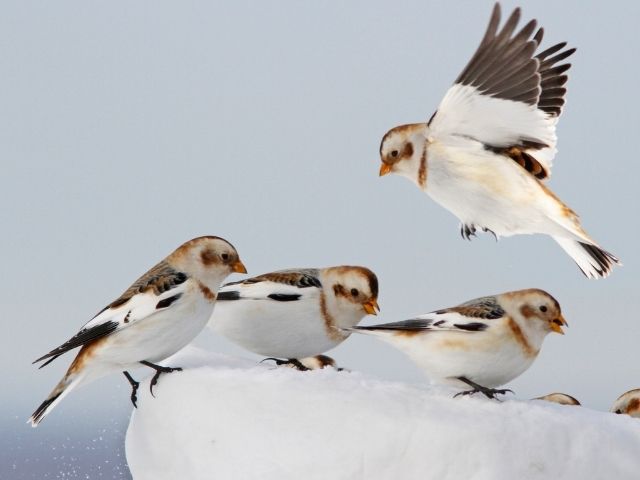
The Plectrophenax Nivalis’ appearance differs based on their gender as well. Males have dark brown and raspberry-colored wings, with lighter raspberry-streaked white breasts. Faces with raspberry-red skin, lighter-colored eyestripes, and a black line visible on their throats.
Their beaks are powerful and bright, with a hint of black. Females lack the red color but have the same markings as males, but lighter brown to tan hue.
Their length is measured for about 5.9 in. from their tails up to their heads. Their wingspans are approximate 11.8 in.
An area with a water supply and rocks for their safety is a guarantee to see them. I recommend placing a birdbath near your feeder for these birds to be attracted.
They most likely feed on mealworms, but their all-time favorites are nyjer seeds and thistles.
4. Ruby-Throated Hummingbird
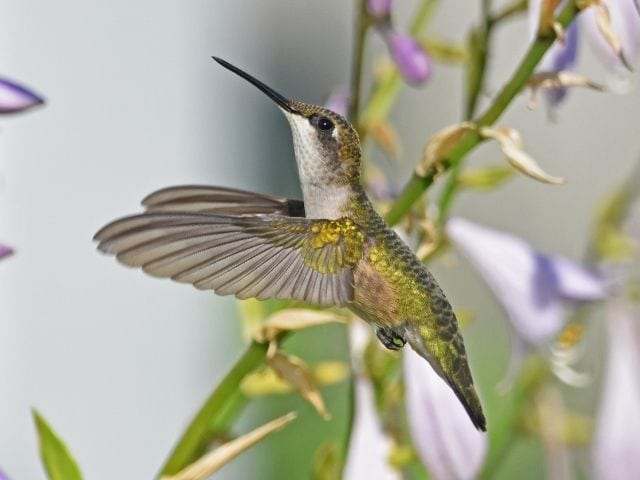
The Ruby-throated Hummingbird, commonly known as the Archilochus Colubris, is a North American hummingbird that is medium in size. This bird got its name from its ruby-colored throat.
Their upperparts are metallic-green in color, while the underparts are white-grey. Their bill is long and their wings are blackish.
Female Ruby-throated Hummingbirds are similar to males but lack a distinctive ruby-colored throat. An adult Ruby-throated hummingbird's body length ranges from 2.8 to 3.5 in.
They take nectar from various flowers and feed on insects using this. Also, they love sugar-water mixtures that are on a hummingbird feeder.
5. Northern Flicker
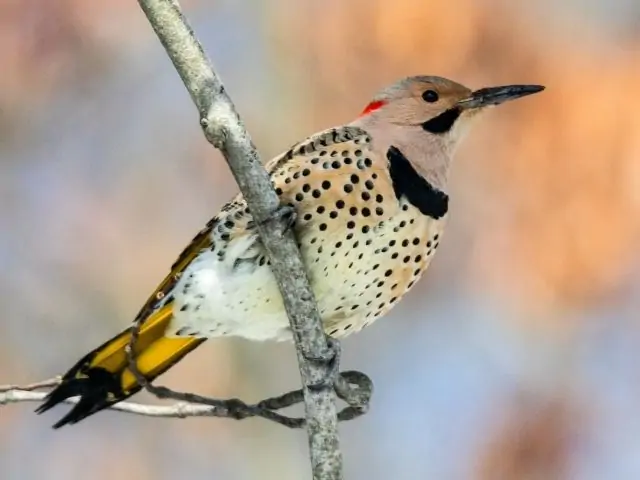
These backyard birds have gray wings with black patterning and white breasts that are likewise speckled black and have a solid black “necklace stripe.”
You'll notice yellow at the tail ends, which distinguishes this bird from the Eastern variation (with the Western sporting a red tail-tip).
They have blue and gray crowns on their heads, brown faces, and a red mark on the back of the neck. Males' long, thin bills even have a “mustache” mark extending back from them.
They can grow up to 11 in. to 12.2 in length and have 16.5 in. to 20 in. of wingspan.
You can easily find them on parks, backyards, or forest edges as they are very fond of these places. Usually, they are on the ground as they search for insects.
To attract them, a suitable suet feeder is sure to hit their appetite.
Fall And Winter Birds
Some Indiana birds aren’t bothered by cold anymore, so they search for foods prepared by watchers.
The following birds that can endure short colds are:
1. Indigo Bunting
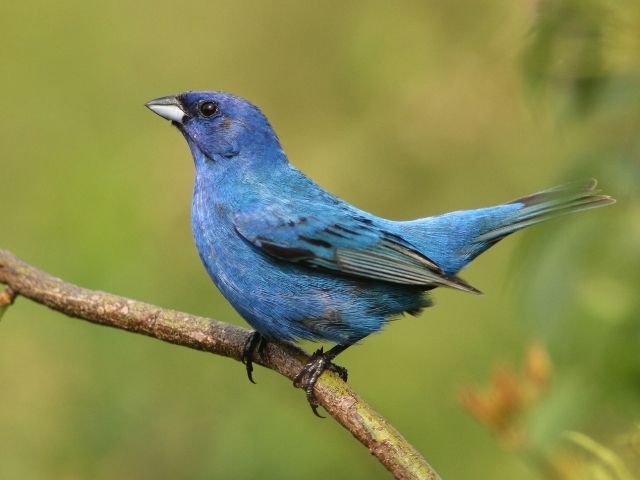
Their blue-colored bodies with white highlights are what make them stand out. In appearance, the color of their body deepens, and the males have silver bills.
The color of their body is brown, with white highlights on their throats extending to their breasts. Nonetheless, they are still attractive and worth sightseeing.
These tiny birds can grow up to 4.7 in. to 5.1 in length and 7.5 in. to 8.7 in. in terms of their wingspans.
Their favorites are mealworms, nyjer seeds, and thistles, and they can be found on most of the forest’s edges, especially when the shrubs surrounding them are profound. My advice for you is to take these into account when placing a bird feeder at home.
2. Chipping Sparrow

This bird has brown and tan-streaked wings. Their bellies are a mix of white and gray, and they have medium-sized gray tails.
They have white faces with a gray patch under the eye and a black streak that extends until the nape. It has a rust-colored cap and a straight black bill.
They measure at 4.7 to5.9 inches in length and have a wingspan of 8.3 inches.
3. Eastern Wood-Pewee
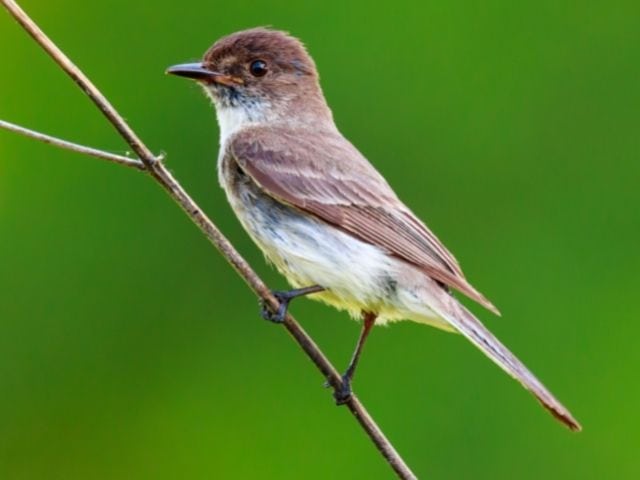
These olive-gray birds have darker wings. Their underbelly has a yellowish or whitish color that darkens as it extends to the side.
Their long, sharp bills are orange when looking at them on their side is one of their highlights, along with the color of their eye that enhances its size.
They are measured 5.9 inches in length and 9.1 to 10.2 inches wingspan.
4. Eastern Kingbird
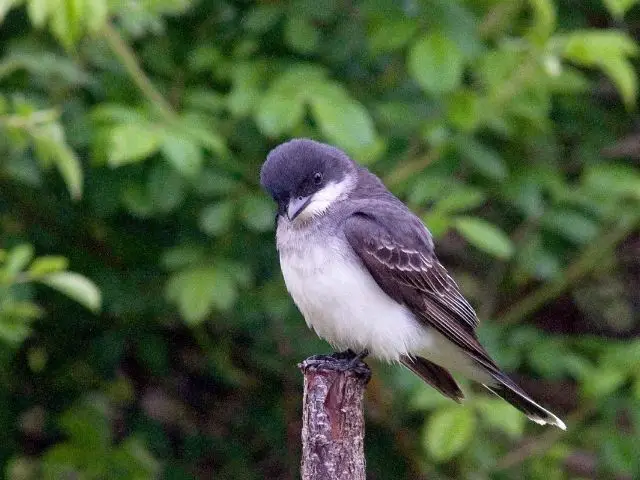
This bird features gray-black wings and tails with a white tip. Their completely white bellies complement their heads.
Their white bellies extend up to their beaks, and their heads are fully black-colored, darker than their wings. The idea of making them stand out so much is that they look like they are in suits.
Their length measures up to 7.5 to 9.1 inches, and their wingspan of 13 to 15 inches.
Fields, forest edges, and even marshlands are their location as they feed on flies. You can attract them with berries and trees.
5. Brown Thrasher
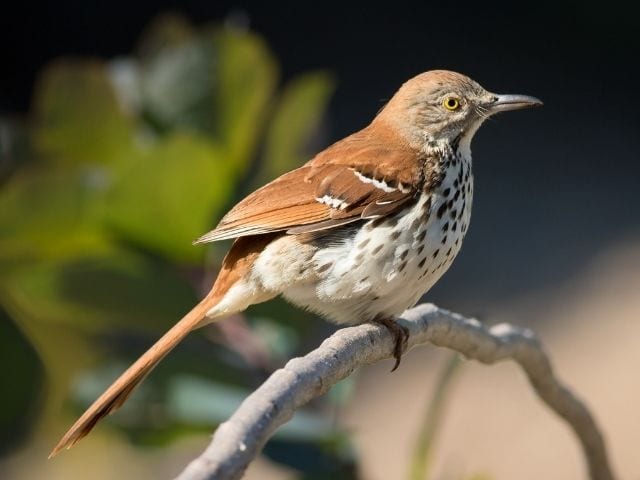
These birds highlight their wings and back that are brown-colored with a touch of black and white. They have white bellies filled with brown streaking. Also, they have bright yellow eyes and long, sharp black bills.
They can grow up to 9.1 to 11.8 inches in length and wingspan of 11.4 to 12.6 inches.
You can lure them to your feeder with dense berry bushes and a treat of peanuts, sunflower seeds, and many more.
Frequently Asked Questions
What is the state bird of Indiana?
The state bird of Indiana is the Northern Cardinal, which is more known as the “redbird” due to its striking red plumage. It is also the same bird that inspired the main character of the famous game Angry Birds.
Here is a shot of a female Northern Cardinal in Indiana:
What bird is most commonly seen in Indiana?
It is the Northern Cardinal as well. They have a large population throughout the state, and they tend to wander off during winter, but they’re non-migratory.
How many bird species are present in Indiana?
Due to the beauty and environment Indiana has, the number of birds migrating and breeding rises, causing more than 418 species within the area.
What is the rarest bird in Indiana?
The Black-Necked Stilt. These are locally abundant shorebirds -- there are only less than 2,000 birds of this species.
What viruses commonly infect Indiana birds?
The viruses, Avian Influenza and West Nile Virus, are the most common.
Avian Influenza is a virus that is natural to wild aquatic birds. However, this can infect domestic poultry and other bird species. Although it cannot infect humans, sporadic human infections have occurred.
This can be transferred when predator or scavenger birds eat a dead bird that is already infected. Also, insect-eating birds will result in them being sick birds after feeding on an infected mosquito.
The Bottom Line
Now that we’ve explored one of the beauties of Indiana, we hope we have given you information about the birds you want to see and appreciate in person.
We wish you a happy and satisfying experience as you cross each Indiana bird on your birdwatching list.
Always make sure to keep a safe distance when birding; it is crucial to respect the peace of the birds in their natural habitats.

